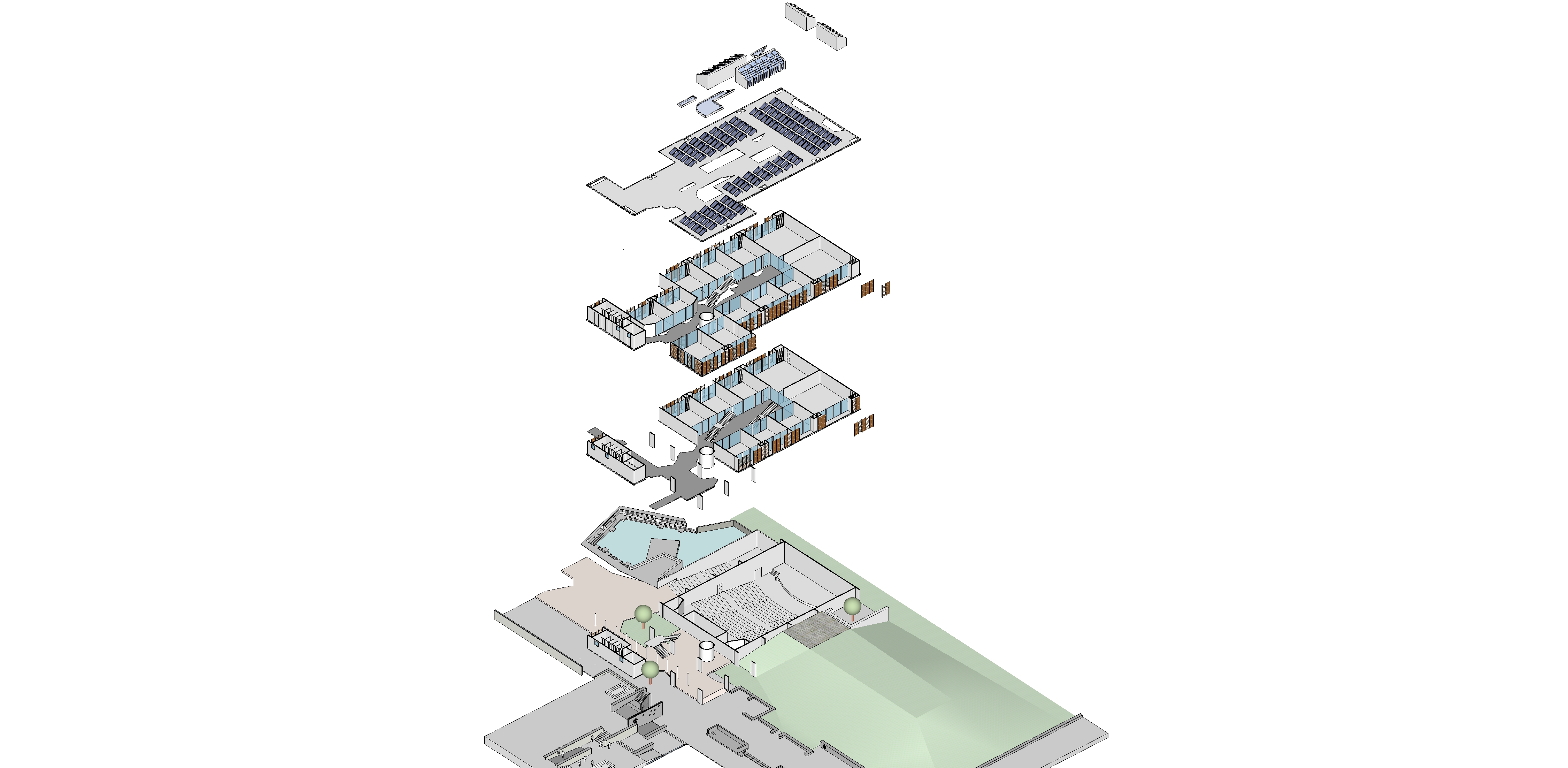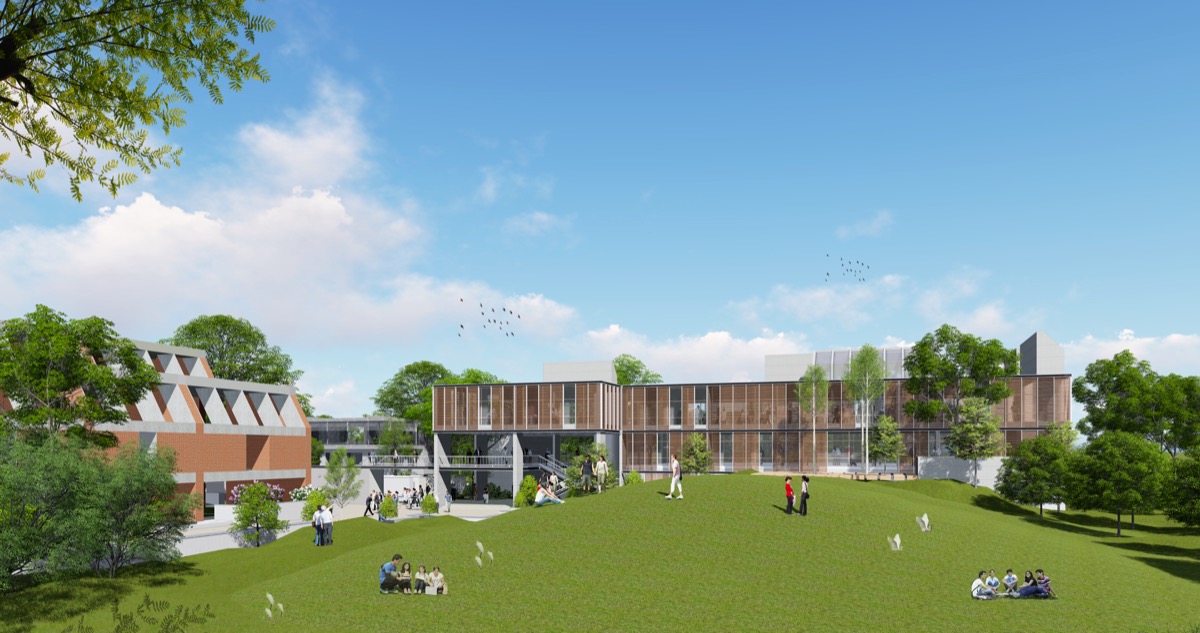 As CEPT University has grown and evolved from very informal teaching and learning methods, in an ashram-like atmosphere of small classes, gradually evolving into a world class university with highly diverse and numerous course offerings, the need for additional learning spaces has increased, almost to the point of a crises.
As CEPT University has grown and evolved from very informal teaching and learning methods, in an ashram-like atmosphere of small classes, gradually evolving into a world class university with highly diverse and numerous course offerings, the need for additional learning spaces has increased, almost to the point of a crises.
Thus, the Board of Management decided to create a new hub for learning and research, that addresses the future vision of the campus. The Academic hub is envisioned as a center for teaching and research, integrating students from many professional disciplines into a common gathering area.
A large research facility will integrate into the hub at a later stage. At present a new centre of learning is envisioned that will include a much-needed auditorium with a capacity of seating five hundred participants; four lecture spaces seating up to eighty people each; eight classrooms accommodating forty students each; and eight seminar rooms accommodating between twenty-five and thirty students each. These facilities will also require supporting sanitary facilities, as well as vertical and horizontal circulation areas.
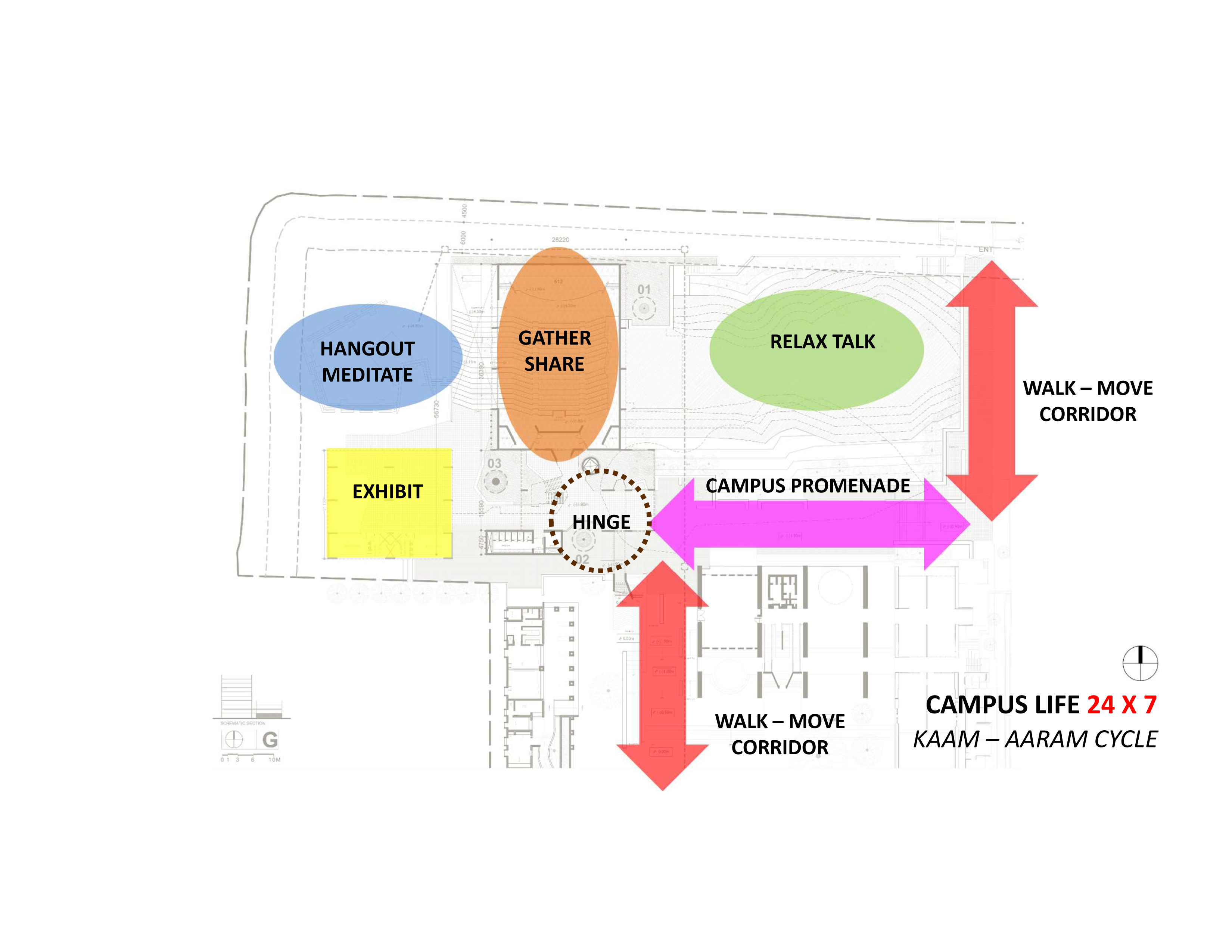
The commission was awarded to Christopher Benninger who has been associated with the CEPT University since he came to the School of Architecture as a Fulbright Fellow in 1968. In late 1971 he returned to CEPT, from the Graduate School of Design, where he was teaching, to initiate the School of Planning. Since his days at CEPT he has founded the Centre for Development Studies and Activities, taught architecture and planning, and carried out the designs of numerous award winning educational campuses. His well-known designs include the Centre for Development Studies and Activities; the Mahindra United World College of India; the new campus at IIM, Calcutta; the emerging IIT, Hyderabad; the Institute of Social Sciences, New Delhi; structures at the College of Engineering, Pune; and the Samundra Institute of Maritime Studies, amongst others. He is the architect for the new Azim Premji University at Bengaluru. These institutes and other award winning projects, ranging from large industrial pavilions to corporate headquarters, convinced the management that his extensive teaching career, published works, half century association with CEPT, and his outstanding design career were the required prerequisites to undertake this important commission.
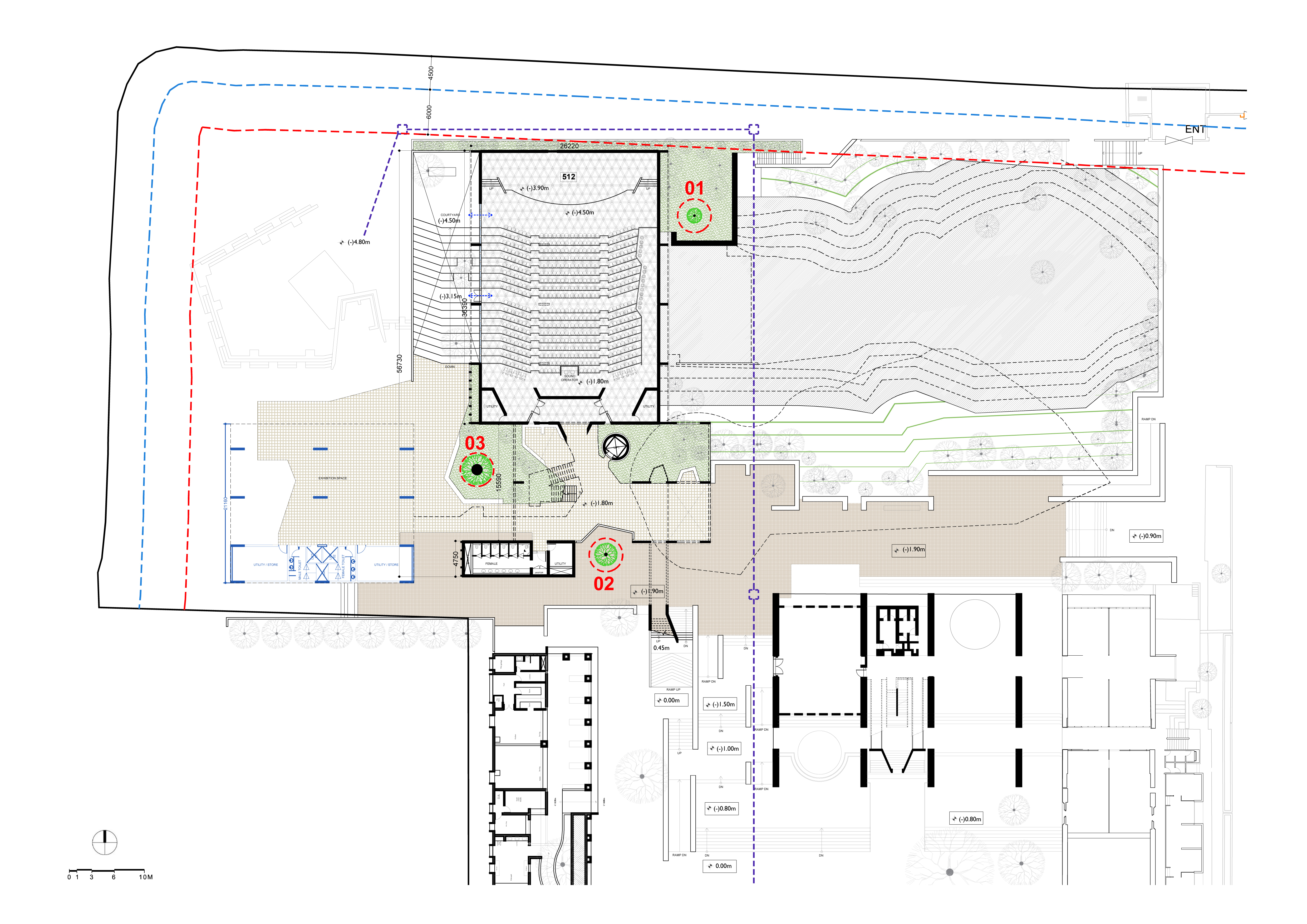
The concept design for this new Academic Hub locates the facility in the North-west corner of the CEPT University campus. The design envisions the built form as being a vibrant hinge, interconnecting a promenade running in front of the School of Architecture, along the iconic campus lawn a connecting through a portico to a water feature where the storm collection pool is, and a lively concourse passing the new café, leading into the Shrenikbhai Lalbhai Plaza.
The design creates a two-level gathering portico, from which one enters the auditorium, accesses an elevator, ascends stairs up to the first level and accesses sanitary facilities.

The plan was evolved in a manner to conserve the older trees on the site, by sliding the structure in three portions from the east to the west, making pockets for these trees. The west side of the auditorium employs movable fenestration opening out onto the water pool. The first level hosts verandah connecting to the upper campus lawn. A bridge connects the café, which sits at a raised level, into the first floor of the portico.
Learning spaces are accessed from a central airy atrium, employing natural light from skylights above, and ventilation drawing fresh air in through sliding screens on the facades, making a building envelope, which shades the entire structure and protects it from the harsh summer sun. Fresh air is gathered from verandahs between the classrooms and these screens. Thus, there is a double skinned envelope employing flexible, moving shade screens on the outer face, separated from sliding glass panels within the classrooms vide small verandahs reminiscent of the balconies in the School of Architecture. All the sectional-elevation heights mirror those of the iconic School of Architecture, constructed more than fifty years ago, gifting a sense of enclosure, yet openness to the campus lawns.
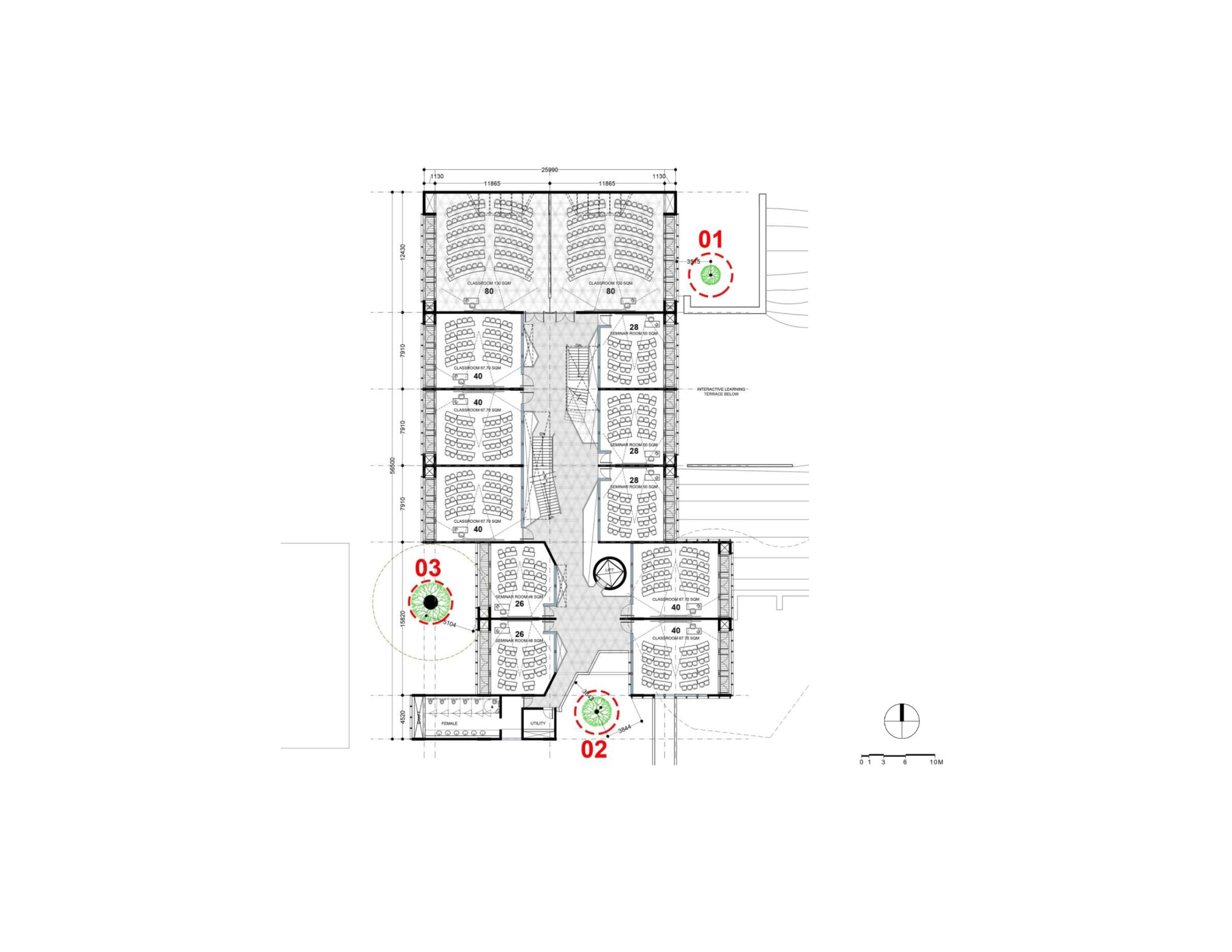
The materials palette includes exposed concrete, aluminum framed glass fenestration within the interior, aluminum sliding jaali panels on the facades, and glass sliding panels set back within small verandahs.
There is an attempt to create transparency though the building, using opaque glass walls between the classrooms and the atrium, while employing solid walls between classrooms. Floors will be of polished Kota stone.
The building is conceived as a green and sustainable one, using non-toxic materials, recycling all the water, employing passive lighting by reflecting daylight from the jaalis up to the ceilings in the classrooms, using air coolers and water based VRV air handling, where needed, and shading the structure from Ahmedabad’s hot sun. Photovoltaic electric panels on the roof reduce the use of carbon fuels, while shading the insulated roof from the piercing Ahmedabad sun!
Model Images
Presentation at CEPT

